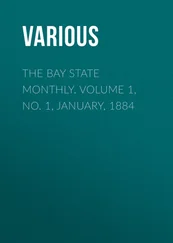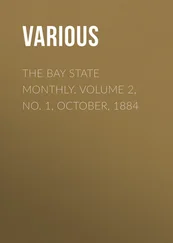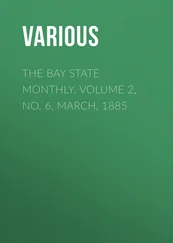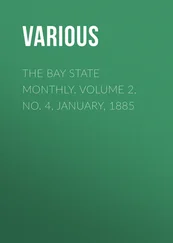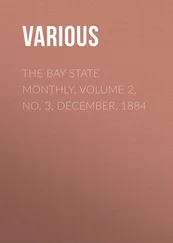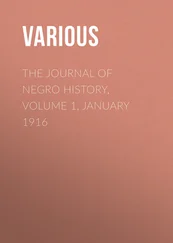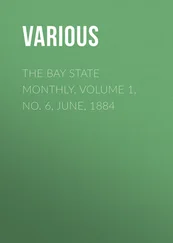Various - The Journal of Negro History, Volume 5, 1920
Здесь есть возможность читать онлайн «Various - The Journal of Negro History, Volume 5, 1920» — ознакомительный отрывок электронной книги совершенно бесплатно, а после прочтения отрывка купить полную версию. В некоторых случаях можно слушать аудио, скачать через торрент в формате fb2 и присутствует краткое содержание. Жанр: foreign_antique, periodic, История, foreign_edu, на английском языке. Описание произведения, (предисловие) а так же отзывы посетителей доступны на портале библиотеки ЛибКат.
- Название:The Journal of Negro History, Volume 5, 1920
- Автор:
- Жанр:
- Год:неизвестен
- ISBN:нет данных
- Рейтинг книги:4 / 5. Голосов: 1
-
Избранное:Добавить в избранное
- Отзывы:
-
Ваша оценка:
- 80
- 1
- 2
- 3
- 4
- 5
The Journal of Negro History, Volume 5, 1920: краткое содержание, описание и аннотация
Предлагаем к чтению аннотацию, описание, краткое содержание или предисловие (зависит от того, что написал сам автор книги «The Journal of Negro History, Volume 5, 1920»). Если вы не нашли необходимую информацию о книге — напишите в комментариях, мы постараемся отыскать её.
The Journal of Negro History, Volume 5, 1920 — читать онлайн ознакомительный отрывок
Ниже представлен текст книги, разбитый по страницам. Система сохранения места последней прочитанной страницы, позволяет с удобством читать онлайн бесплатно книгу «The Journal of Negro History, Volume 5, 1920», без необходимости каждый раз заново искать на чём Вы остановились. Поставьте закладку, и сможете в любой момент перейти на страницу, на которой закончили чтение.
Интервал:
Закладка:
The Commissioner of Education was able to report in 1870: "This State has a larger proportion of schools 213for Negro children than any former slave State. Opposition to the education of the Negroes is rapidly disappearing. Their rapid improvement and good conduct help to disarm prejudice." Among the methods of evading the law the following were reported; the failure to enumerate the Negro children, the complaints of a lack of funds, and the plea of an inability to secure teachers. In 1875 the State Superintendent reported 214that the citizens of Calloway County, the most strongly southern county in the State during the Civil War, were evincing the greatest readiness to provide good schools for their large Negro population. This, he believed, augured well for the future of the Negro schools of the State, since it indicated a growing kindly disposition of the southern element of the State towards them. How great was the change in sentiment can be readily seen by contrasting this report with those of the county superintendent for 1866 and 1867. In 1866 the Superintendent of Calloway reported 215much objection to public schools in that county on account of the impartial application to children of all races and colors. The only Negro school in the county had been established under very discouraging circumstances at Fulton. In many rural districts there were not enough children to permit the establishment of a school and in other districts the existing opposition to Negro schools made their establishment impossible. The next year it was reported 216that the white schools were better fitted for pigs than for children and that there was no interest at all in the education of Negro children.
Another factor which effected the development of the Negro school system was the sparseness of the Negro population. In many districts and even in some counties there were not enough Negro children to form a school. In 1871, reports 217were received from 109 of the 115 counties of the State. Thirty-nine of the 109 counties did not report a single school district with the required number of Negro children to establish a school. The other seventy counties reported 395 school districts having twenty or more Negro children of school age. The same counties also reported 158 schools for these children. In their annual letters for 1872 twenty-one county superintendents called attention to the fact that the Negro population was so distributed over the counties that it was impossible to provide schools for them according to the law. Three of these superintendents asked that the law might be so amended as to provide for Negro children in the sparsely settled districts, and one superintendent advocated 218that in districts in which there were too few Negro children to form separate schools, they should be admitted to the white schools.
That same year the State Superintendent reported 219that in several cases in which no schools were provided because of the small number of pupils, that their parents had asked why their children could not enter the white schools since there was no direct law prohibiting it. The next year 220the Negro children in several districts did enter the white schools with the tacit consent of the white population. When the State Superintendent was asked whether or not they could be ejected 221he replied that there was no law to that effect. At this time the enactment of a civil rights bill was being agitated in the State. This bill 222provided that the public schools of the State should be open to all children regardless of color. When the civil rights bill was defeated in 1874, there was passed another bill which aimed to relieve the situation in the sparsely settled districts.
In 1869 the legislature had passed a law 223permitting two or more districts, each of which had less than fifteen Negro population but which when taken together had more than that number, to establish a union school for those children. This law on account of its lack of force did not accomplish much good. In 1874 the law 224was amended in such a way as to make it obligatory for two or more districts, each of which had too few Negro children, to form a school to unite to form a union school. It was also ordered that all taxable property in a township in which a Negro school was situated should be taxed for its support.
In 1875 each district supported its own school 225for white children, while the whole township in which a Negro school was situated was taxed for its support. No district in the State could be compelled by the law to maintain a school for its white children, but if there were more than fifteen Negro children in the district, the law compelled the local authorities to establish a school for them. If they failed to do so, the law directed the State Superintendent to establish and to levy taxes for the support of Negro schools in such communities. In those districts in which there were too few Negro children to form a separate school, union schools were to be established. The last mentioned law, however, was passed too late to have much effect upon the period under discussion. School officials who refused to perform the duties of their office could be fined 226
Конец ознакомительного фрагмента.
Текст предоставлен ООО «ЛитРес».
Прочитайте эту книгу целиком, на ЛитРес.
Безопасно оплатить книгу можно банковской картой Visa, MasterCard, Maestro, со счета мобильного телефона, с платежного терминала, в салоне МТС или Связной, через PayPal, WebMoney, Яндекс.Деньги, QIWI Кошелек, бонусными картами или другим удобным Вам способом.
1
In the preparation of this manuscript the following books have been useful: Thomas P. Bailey, Race Orthodoxy in the South (New York: the Neale Publishing Company, 1914); Benjamin Griffith Brawley, A Short History of the American Negro (New York: The Macmillan Company, 1913); Daniel Wallace Culp, Twentieth Century Negro Literature (Naperville, Illinois, J. L. Nichols and Company, 1902); Albert Bushnell Hart, The Southern South (New York, D. Appleton and Company, 1912); Mary White Ovington, Half a Man (New York and London: Longmans, Green and Co., 1911); William Passmore Pickett, The Negro Problem (New York and London: G. P. Putnam's Sons, 1909); Charles Victor Roman, American Civilization and the Negro (Philadelphia: F. A. Davis Company, 1916); Gilbert Thomas Stephenson, Race Distinctions in American Law (New York and London: D. Appleton and Company, 1910); Booker T. Washington, My Larger Education (Garden City, New York: Doubleday, Page and Company, 1911); Booker T. Washington, Working with the Hands (New York: Doubleday, Page and Company, 1904); Booker T. Washington and W. E. Burghardt Du Bois, The Negro in the South (Philadelphia: G. W. Jacobs and Company, 1907); Booker T. Washington and others, The Negro Problem (New York: J. Pott and Company, 1903); Willis Duke Weatherford, Negro Life in the South (New York: Young Men's Christian Association Press, 1910); Carter Godwin Woodson, The Education of the Negro Prior to 1861 (New York and London: G. P. Putnam's Sons, 1915).
The following articles have also been used: Henry E. Baker, The Negro in the Field of Invention ( Journal of Negro History , January, 1917, p. 21); W. H. Baldwin, Jr., The Present Problem of Negro Education ( American Journal of Social Science , 37, 1899, p. 52); W. E. Burghardt DuBois, The College Bred Negro (Atlanta University Publications, No. 15, Atlanta, 1910); The Common School and the Negro American (Atlanta University Publications, No. 16, 1911); The School (Atlanta University Publications, No. 14, 1909); Education and Crime Among Negroes ( Review of Reviews , 55, 1917, p. 318); Hampton Negro Conference, Annual Report , July, 1899 (Hampton Institute Press, 1889); Higher Education of the Negro ( The Nation , 100, 1915, p. 187); George Johnson, Education of the Negro ( The Nation , 100, 1915, p. 443); Jesse Lawson, How to Solve the Race Problem (Report of the Washington Conference on the Race Problem in the United States, Washington, D. C., 1904); William Mathews, The Negro Intellect ( North American Review , 149, 1889, p. 91); More Testimony on Negro Migration ( Survey , July 14, 1917, p. 340); National League on Urban Conditions Among Negroes, Bulletin , Vol. V, No. 1, November, 1915; Michael E. Sadler, Education of the Colored Race (Great Britain Educational Department, Special Reports of, 1902, Volume II); Charles Dudley Warner, The Education of the Negro ( American Journal of Social Science , 38, 1900, p. 1); Booker T. Washington, Fifty Years of Progress ( Forum 55, 1916, pp. 269-79); Monroe N. Work, The Negro Year Book (Nashville, Sunday School Union Print, 1915).
Читать дальшеИнтервал:
Закладка:
Похожие книги на «The Journal of Negro History, Volume 5, 1920»
Представляем Вашему вниманию похожие книги на «The Journal of Negro History, Volume 5, 1920» списком для выбора. Мы отобрали схожую по названию и смыслу литературу в надежде предоставить читателям больше вариантов отыскать новые, интересные, ещё непрочитанные произведения.
Обсуждение, отзывы о книге «The Journal of Negro History, Volume 5, 1920» и просто собственные мнения читателей. Оставьте ваши комментарии, напишите, что Вы думаете о произведении, его смысле или главных героях. Укажите что конкретно понравилось, а что нет, и почему Вы так считаете.

